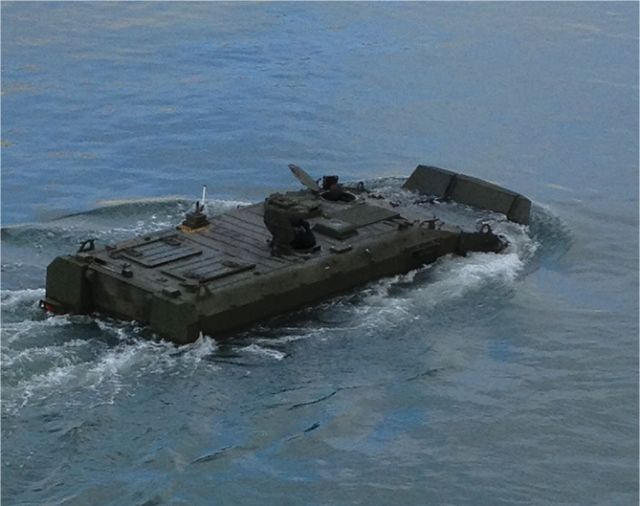U.S. Marine Corps defends the need of next generation amphibious armored vehicle ACV 1.1
|
|
|||
|
Military defense industry Technology - Advanced Combat Vehicle 1.1
|
|||
|
|
|||
| U.S. Marine Corps defends the need of next generation amphibious armored vehicle ACV 1.1. | |||
|
The Marine Corps' top combat gear developer defended the service's next-generation amphibious vehicle on Capitol Hill Wednesday, march 12, 2015. The Advanced Combat Vehicle 1.1 is critical to the service's ability to execute its traditional mission in the years ahead and is now the service's "No. 1 priority" after amphibious modernization took a back seat during the wars in Iraq and Afghanistan, Lt. Gen. Kenneth Glueck, Marine Corps Combat Development Command's commanding general, told the members of the Senate Subcommittee on Seapower.
|
|||
|
|
|||
 BAE Systems and IVECO Defence have joined forces to present a fully amphibious ACV 1.1 vehicle capable of performing open-ocean ship launch and recovery operations. BAE Systems and IVECO Defence have joined forces to present a fully amphibious ACV 1.1 vehicle capable of performing open-ocean ship launch and recovery operations. |
|||
|
|
|||
|
"To be the Marine Corps you want and our nation needs, we need to do some vehicle modernization," Glueck said. The demand for expeditionary missions requiring amphibious capabilities will only increase in the years to come, he added. The ACV 1.1 will be at the heart of that mission, although some question the vehicle's inability to quickly cross long distances. "We see connectors will be critical in the future for self-deployers and non-self-deployers," he said. The development of a vehicle that could hydroplane at a high rate of speed and bridge that distance is technically feasible, Glueck said, but would come at the cost of protection, lethality and its ability to maneuver ashore where most of the mission will occur. The immediate plan calls for outfitting six battalions with 200 ACVs by 2023, and modernizing enough AAVs to outfit another four battalions. That would give the service the ability to put 10 battalions ashore during a forcible entry operation.Because of advances in technology, including independent suspension, the wheeled ACV will provide improved maneuverability over the tracked AAV, which is more than 40 years old. Even if struck by an improvised explosive device that destroyed several tires, the next generation ACV will be able to drive out of a kill-zone, Glueck said. |
|||
|
|
|||
 |
|||


























